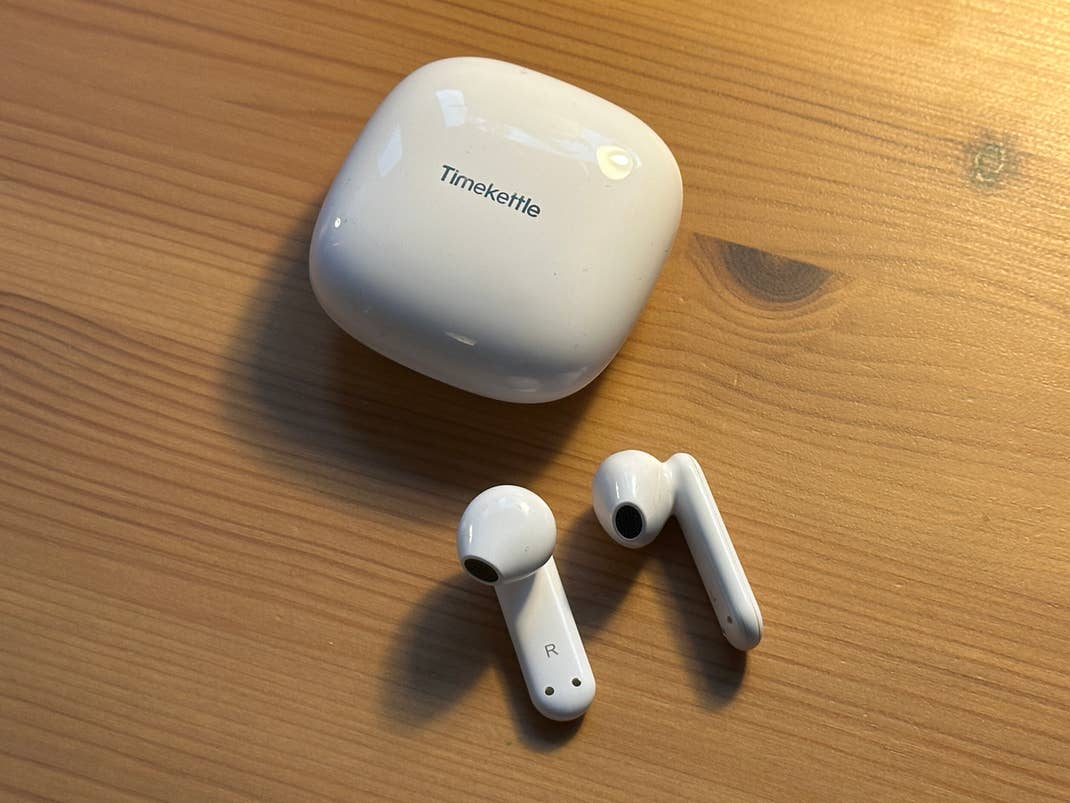With the Translator Earbuds WT2 Edge by Timekettle, you should be able to converse in 40 different languages. But how well does this technique work? We looked at the headphones and tested them.

TABLE OF CONTENTS
1-Four translation modes to choose from
2-How well does the translation work?
3-Not only advantages in everyday life
4-Should you buy the translator headphones?
At first glance, the Timekettle WT2 Edge look like normal true wireless headphones. But they are not made for listening to music, but are your personal synchronous translator for the ear. To do this, you have to connect the ear studs to the corresponding Timekettle app on your smartphone.
FOUR TRANSLATION MODES TO CHOOSE FROM
Four different modes are available in the app. Simul, Touch, Speaker and Listen. These are suitable for different scenarios. In Simul mode, both conversation partners wear one of the ear studs. Both speak in their own language and the other person’s headset translates what is said almost in real time. The delay is only a few seconds. Touch mode works the same way, except you have to tap the earbud to talk. As a result, this mode is particularly suitable for loud surroundings, where other voices could otherwise be caught.
Listen mode works differently. Here you wear both headphones and the spoken content is automatically translated. This is particularly useful for following lectures or presentations in languages that you don’t speak yourself. In speaker mode, multiple people need the Timekettle app and headphones. In this way, several people can speak in their own language and everyone hears the respective translation in their own language.

HOW WELL DOES THE TRANSLATION WORK?
In theory, the functions of the translator headphones sound great – almost a bit like science fiction. But how well does it work in everyday life? We tried it with several languages.
To use the Translator headphones, you need to create an account in the Timekettle app. At the same time, our hopes for a good translation are rapidly falling. Because the app not only looks visually unappealing, but is also full of translation errors. It goes so far that we even have to refer to the instructions to pair the headphones with the app.

But the headphones themselves work surprisingly well. I tried out the Simul mode with a colleague. The headphones effortlessly translated his Russian sentences into German. Of course not 100 percent error-free, but good enough to enable a conversation. My answers were also reliably translated. The delay was only a few seconds, so that a conversation with short pauses was possible. However, the headphones are relatively sensitive and try to translate every sound they detect. Outside of the quiet editorial office, I would therefore fall back on the touch mode.
In a second attempt, I used the listen mode to follow the Chinese-language presentation of the Xiaomi 13 series . I usually use Google translator for this and read the translations in text form. The spoken translation was far from perfect, which is not surprising in a difficult-to-translate language like Chinese. For example, Chinese is much more visual than many European languages and the stress of the syllables is more important. Nevertheless, the translation was a bit better than what I’m used to from Google’s translator and you get the translation read out directly.
NOT ONLY ADVANTAGES IN EVERYDAY LIFE
During testing, however, we also noticed one or the other problem with the concept. For reasons of hygiene, it is strange to pass on in-ear headphones to the person you are talking to. This makes the product less suitable for short entertainment when travelling. You also have to first explain how the headphones work, which is not easy depending on the language barrier.

The quality could also be better for a product with a list price of 349 euros. This applies to both the app and the hardware. The headphone case is relatively difficult to open and the case and headphone are not of high quality. There is also no way to adjust the volume during use. This is only possible via the settings of the app. Unfortunately, it is also not possible to use the earbuds to listen to music and are limited to the function as a translator.
SHOULD YOU BUY THE TRANSLATOR HEADPHONES?
In our test, we tested the Timekettle WT2 Edge with multiple languages. Whether it was Russian, French, Chinese or Dutch, the earring translation was good enough to hold a conversation. However, one should not expect miracles. After all, speech is converted into text here and then also translated into another language. Both steps make mistakes. The result is comparable to the language function of Google Translate. Except that here you get the translation right in your ear and it becomes possible to have a continuous conversation.
The app, on the other hand, needs to be improved. Not only is it poorly translated and designed in an unintuitive way, it also needs a restart every now and then to work properly. We noticed these issues on both iPhone and Android.
The ear studs also have their pitfalls and especially when traveling it is easier to translate a few sentences via smartphone, since everyone understands the principle and you don’t have to share in-ear headphones with other people. However, for longer conversations or to follow a presentation in a foreign language, the Timekettle WT2 Edge are a great help.
With a list price of 349 euros, however, the headphones have a proud price. You can order them from Amazon here .


